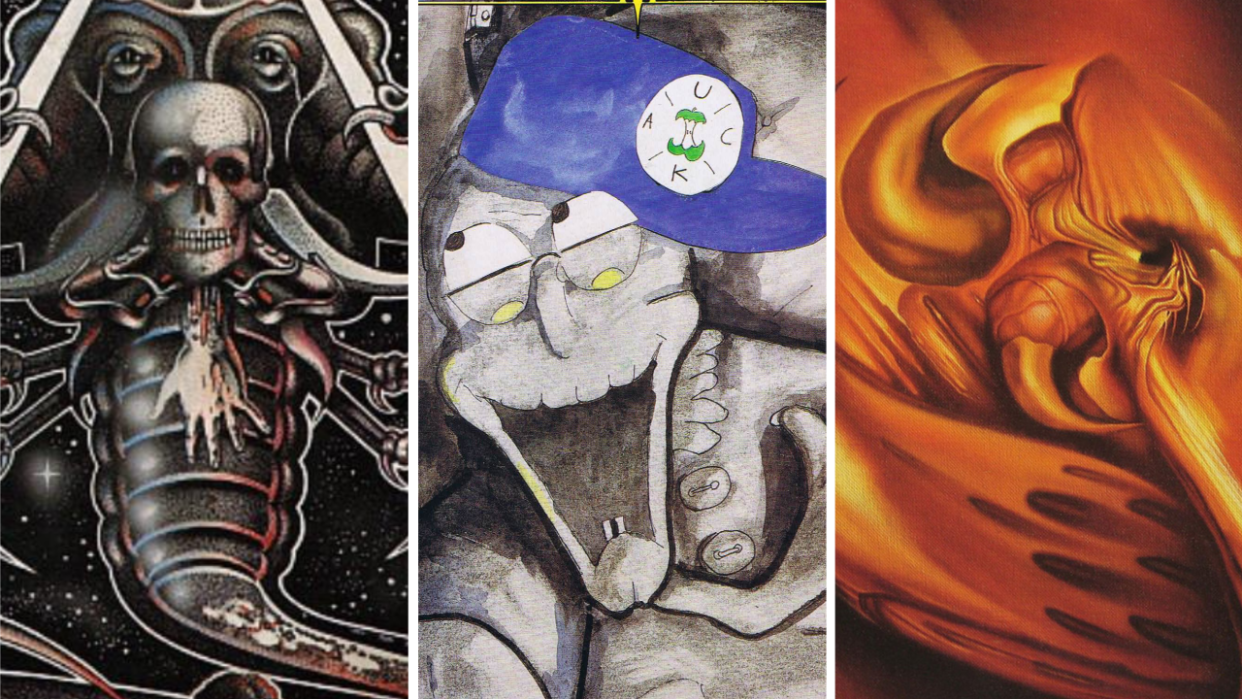10 thrash metal bands from the ’80s that should have been absolutely massive

In early-’80s USA, the arrival of glam meant that metal was growing too polished and safe for many diehards. Then thrash put the savagery back in extreme music’s black heart. And – while giants like Metallica, Slayer, Kreator and Megadeth garnered deserved acclaim for pushing metal to new, primal places – in their collective shadow were a legion of obscure and unsung heroes. Here are 10 lesser-known ’80s thrash outfits who deserve a share of the limelight:

Paradox (1986–1991, 1998–present)
Formed in the mid-’80s, these brawling Germans seemed poised for the big time after the release of their 1987 debut, Product Of Imagination. Though owing a clear debt to early Metallica, Paradox cranked out old-school thrash with a raw, furious edge, courtesy of their double lead guitar attack. 1989’s Heresy is a bare-knuckled beatdown of intricate riffing and pure power that belongs in any Best Of German Thrash playlist.
Acid Reign (1985–1991, 2015–present)
These cheeky Brits played rampaging crossover thrash with a flinty-eyed sneer and a hefty dose of humour. Their 1989 debut, The Fear, led some in the UK press to hail them as the country’s answer to Anthrax. It was a fair cop but, some similarities notwithstanding, Acid Reign backed up their snotty irreverence with top-flight musicianship and a live show that boasted more urgency than a cannon attack.
Mekong Delta (1985–1997, 2006–present)
When these Berlin-based progressive thrashers formed in 1985, they assumed that German names wouldn’t look cool in the wider metal scene. So, they played anonymously long before Ghost and Sleep Token made it the in thing. The band also sought to musically outshine their speed metal peers by specialising in a distinctly classical-inspired and complex style. Considering that Mekong Delta haven’t released a duff album in 30-plus years, we’d say it was mission accomplished.
Holy Terror (1986–1989, 2017–2018)
Though the mid-’80s thrash explosion was well underway when Holy Terror arrived on the scene, their 1987 debut, Terror And Submission, revealed enough versatility to set them apart from the growing list of Exodus imitators. While never sacrificing the coarse brutality of the music, these L.A. aggressors experimented with dazzling tempo shifts and proggy fretwork. They were also nods to Priest and Maiden, alongside a keen penchant for fist-pumping choruses.
Xentrix (1984–1997, 2005–2006, 2013–present)
The most dominant thrash bands seemed to pop up in either the US or Germany, but among the UK’s more excellent contributions were Lancashire’s Xentrix. Boasting elite technical proficiency, their hammering style of thrash wove intricate melodies into taut, savage riffs. While they earned 15 minutes of fame for their cover of the Ghostbusters theme, their early output stands easily on its own merits.
Sacrifice (1983–1993, 2006–present)
These Canadian thrashers rivalled countrymen Annihilator and Exciter on every front, yet somehow they never found the recognition they most certainly deserved. A paragon of brutal efficiency, Apocalypse Inside saw the band infuse their high-velocity tempos with flashes of goth rock, prog and late-’70s metal. Packed with razor-wire riffs and raging speed metal tempos, the Sacrifice catalogue sounds every bit as vital today as it did 30 years ago.
Toranaga (1983–1992, 2001–2006, 2010–present)
These Yorkshire heavies made a seismic splash when they debuted at the end of the ’80s, snagging highly-coveted airplay on the BBC Rock Show. Although thrash was entering a period of petrification, with real innovation often ignored or rejected, Toranaga were unconcerned with genre conventions. They instead dispensed a thrilling amalgam of thrash and melodrama that appealed to both the beer-sodden speed metal crowd and Ronnie James Dio diehards.
Slammer (1987–1992, 2023–present)
After forming in 1987, Slammer were less concerned with celebrating the roots of thrash than with predicting where the genre could go next. Their experiments were, ultimately, all for naught, what with grunge and later nu metal seizing the heavy music landscape. Nonetheless, on 1989 debut album The Work Of Idle Hands, the Bradford boys interspersed scorching thrash anthems with utterly exhilarating forays into groove metal and classic rock.
Anacrusis (1986–1993, 2009–2013)
Hailing from the American midwest, Anacrusis developed a sound untainted by the thrash movements gathering on either coast – however, that lack of a supportive scene also contributed to their fast breakup. Their 1991 debut, Manic Impressions, synthesised jackhammer tempos and squalls of distortion with lofty forays into prog and goth rock. They pushed the boundaries even further on 1993’s Screams And Whispers. In a thrash scene bursting with copycats, Anacrusis were a dazzling antidote.
Holosade (1985–1991, 1994, 2011–present)
Holosade formed in the UK while the dust of the New Wave Of British Heavy Metal was still settling. As a result, these Durham prospects announced themselves as a powerfully melodic, heroic-sounding option in the global thrash scene on their 1988 debut, Hell House. The band have broken up multiple times though, which – together with pop-culture’s pendulum swing towards grunge and alt-rock – obliterated their momentum during the 1990s.

